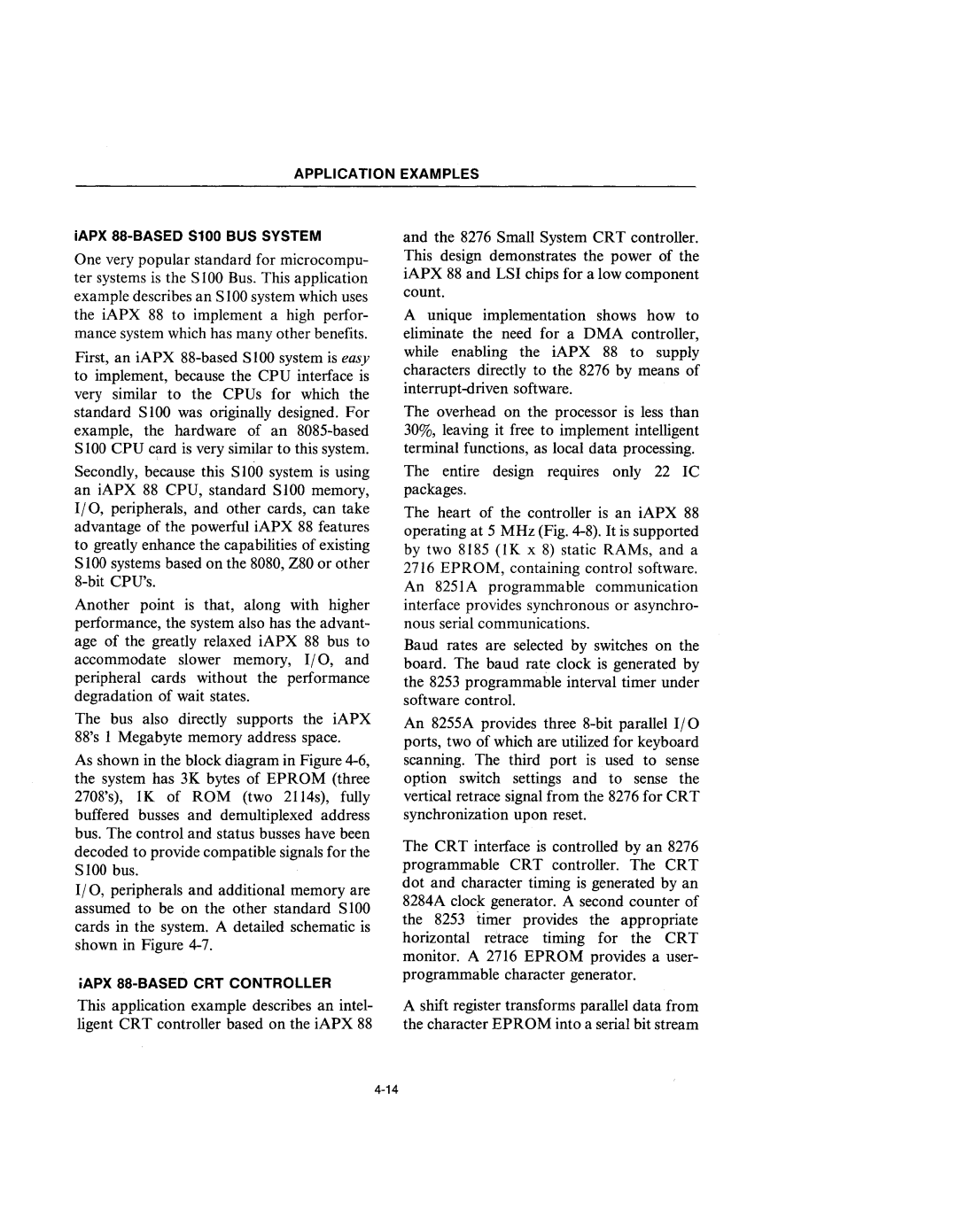
APPLICATION EXAMPLES
iAPX 88-BASED $100 BUS SYSTEM
One very popular standard for microcompu- ter systems is the S 100 Bus. This application example describes an S100 system which uses the iAPX 88 to implement a high perfor- mance system which has many other benefits.
First, an iAPX
Secondly, because this SIOO system is using an iAPX 88 CPU, standard SIOO memory, 1/0, peripherals, and other cards, can take advantage of the powerful iAPX 88 features to greatly enhance the capabilities of existing S 100 systems based on the 8080, Z80 or other
Another point is that, along with higher performance, the system also has the advant- age of the greatly relaxed iAPX 88 bus to accommodate slower memory, 1/0, and peripheral cards without the performance degradation of wait states.
The bus also directly supports the iAPX 88's 1 Megabyte memory address space.
As shown in the block diagram in Figure
1/0, peripherals and additional memory are assumed to be on the other standard S100 cards in the system. A detailed schematic is shown in Figure
iAPX
This application example describes an intel- ligent CRT controller based on the iAPX 88
and the 8276 Small System CRT controller. This design demonstrates the power of the iAPX 88 and LSI chips for a low component count.
A unique implementation shows how to eliminate the need for a DMA controller, while enabling the iAPX 88 to supply characters directly to the 8276 by means of
The overhead on the processor is less than 30%, leaving it free to implement intelligent terminal functions, as local data processing.
The entire design requires only 22 IC packages.
The heart of the controller is an iAPX 88 operating at 5 MHz (Fig.
Baud rates are selected by switches on the board. The baud rate clock is generated by the 8253 programmable interval timer under software control.
An 8255A provides three
The CRT interface is controlled by an 8276 programmable CRT controller. The CRT dot and character timing is generated by an 8284A clock generator. A second counter of the 8253 dmer provides the appropriate horizontal retrace timing for the CRT monitor. A 2716 EPROM provides a user- programmable character generator.
A shift register transforms parallel data from the character EPROM into a serial bit stream
